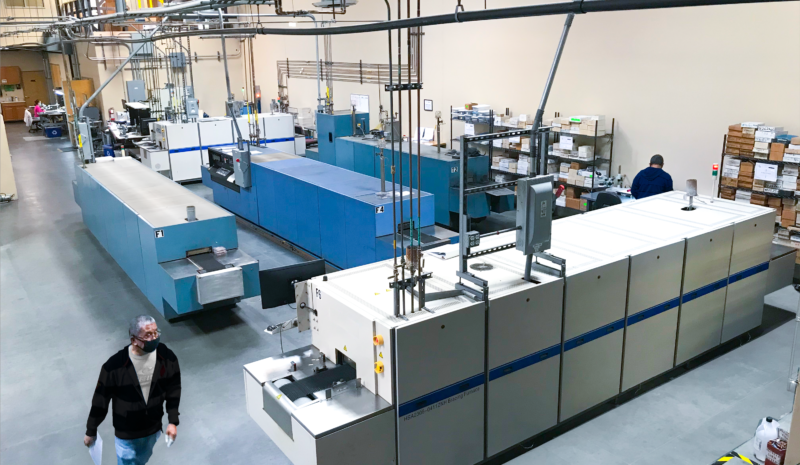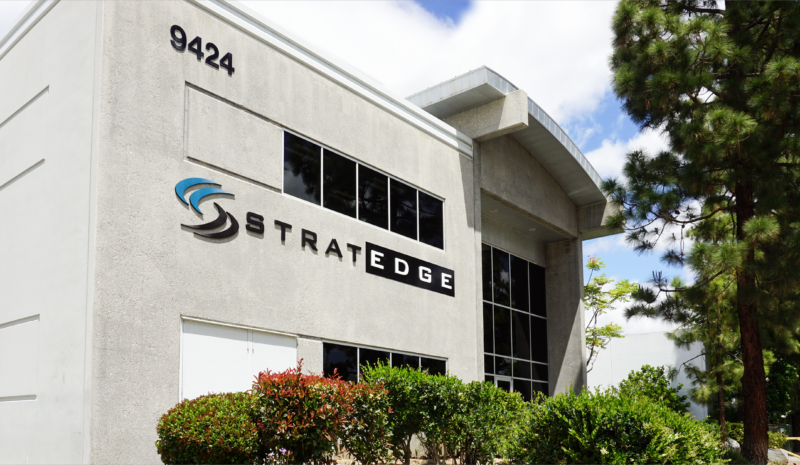Since its founding in 1992, StratEdge Corporation has moved its factory a couple of times. Its recent move from Sorrento Mesa, in San Diego, to nearby Santee, California, was not by choice. The president of StratEdge, Tim Going, received a most unpleasant call while on a business trip in November 2018. The fire chief told him that StratEdge was on fire. It is not the call one wants to receive. It’s like driving your car and realizing you have a flat tire and need to pull over to fix it. But this sinking feeling in the gut is a hundred times worse. The fire originated somewhere in the plating area, which included nickel and gold plating lines. The burning plastics and chemicals created plumes of caustic smoke that essentially gutted the building and destroyed almost all of the electronics within the equipment (Figure 1).

A Stormy Past
StratEdge has always been a nimble company, making adjustments in strategy or product offerings to stay competitive in the semiconductor packaging and assembly business. It’s an industry where the only constant seems to be change.
The company has weathered storms in the past. When it was founded and became StratEdge, the company was owned by a Venture Capitalist (VC). With its patented designs, it rode the telecom boom in the 1990s with highly successful products used in very small aperture terminals (VSATs), internet infrastructure, and automated test equipment (ATE). But like so many other companies, it was brought to its knees by the telecom bust in the early 2000s.
“I remember going to the Optical Fiber Conference (OFC) in Atlanta in 2003,” Jerry Carter, senior technologist, and 28-year employee reminisced. “It was like a ghost town. The aisles were empty because no one attended. The saddest thing was many of the booth sites were vacant because the companies either went bankrupt or decided to skip the show to save money on travel expenses.”
After attending the IEEE MTT-S International Microwave Symposium just a few weeks later, the VC decided to pull the plug. The portfolio of companies in the fund was bleeding cash, and despite a relatively healthy backlog of orders, without VC funding, StratEdge became insolvent. The plan of being acquired at a handsome price, like so many dotcoms, had become an impossible dream, and the company had to be revamped.
Back and Better than Ever
Fast forward to today. The 2018 factory fire had a couple of silver linings. The storeroom was on the opposite side of the building from the fire and the inventory was protected in vacuum-sealed bags, so no finished goods were lost. The company also had good insurance, which allowed for replacement equipment to be purchased. And finally, the employees remained loyal while the rebuilding effort took place. Most of StratEdge’s employees have been with the company for over fifteen years.
Although a daunting task, rebuilding the company practically from scratch had some benefits. StratEdge had been working with Palomar Technologies for several years on perfecting gold-tin (AuSn) die attachment of chips, with a concentrated focus on gallium nitride (GaN) devices. Die attachment is the process of attaching a device to a tab or heat spreader, package, or another die. StratEdge developed a proprietary AuSn eutectic die attach technique that, in conjunction with its leaded laminate (LL) packages with CMC bases, was found to achieve superior thermal dissipation. The Palomar 3880, a fully automated die bonder, was purchased and installed along with other sophisticated precision equipment in a new Class 1000 cleanroom, which includes Class 100 work areas with ESD control for performing sensitive operations (Figure 2).

Even though StratEdge is mostly known for its high-performance, high-power packages made from post-fired ceramic and molded ceramic materials, the company has provided microelectronic assembly services since the late 1990s. The influx of new, state-of-the-art assembly equipment increased throughput for the assembly of high-frequency and high-speed monolithic microwave integrated circuit (MMIC) devices, along with passive components including some with 50-ohm lines. This new automated equipment and proprietary die-attach method perform precise eutectic, epoxy die attachment, and wire bonding to ensure short, consistent loop lengths and heights for the most optimal electrical performance. The company assembles packages and lids manufactured by StratEdge, as well as customer-furnished packages and boards. The flexibility of the equipment and skill of its operators enables StratEdge to accommodate the numerous needs of its customers.
As mentioned, StratEdge has designed and manufactured packages for compound semiconductors since its beginning. Some of the belt furnaces used to produce molded ceramic packages were more than 40 years old. Amazingly, some of the ancient furnaces survived the fire. The replacement furnaces are state-of-the-art, with multiple sensors that allow more precise control of the various heating zones within the furnace (Figure 3).

Since their installation, yields have steadily improved. With the new larger facility and better equipment, StratEdge’s capacity for building ceramic and molded ceramic packages in support of the 5G infrastructure has increased. The packages, most often used to protect high-power laterally-diffused metal-oxide semiconductors (LDMOS), gallium arsenide (GaAs), silicon carbide (SiC), and GaN devices, match standard outlines developed to support cellular base stations. Run rates in excess of 100,000 packages are being accommodated.
“As a result of the fire, StratEdge moved into a new facility in 2019 where we continue to design, manufacture, and provide assembly services for a complete line of post-fired ceramic, low-cost molded ceramic, and ceramic QFN packages, some of which operate from DC to 63+ GHz,” said Tim Going, president, and CEO of StratEdge. “Although the process of rebuilding has certainly had its challenges, it’s positioned us to meet the increasing demands for 5G equipment and specialized defense and commercial applications, including radar, communications, avionics, and customer-premises equipment (CPE).” (Figure 4.)

Conclusion
The old saying about when life hands you lemons, make lemonade, is true. The fire facilitated an upgrade of the entire company. StratEdge is better positioned to support its customers, including those with aerospace and military applications, than ever before. The advanced packaging lines and microelectronic assembly services, combined with electrical and environmental test capabilities and design services, have well-positioned the company to support its customers in the various industries in which they participate.
This article first appeared in the 2021 Yearbook. Read more articles from our 3D InCites community members here.





















